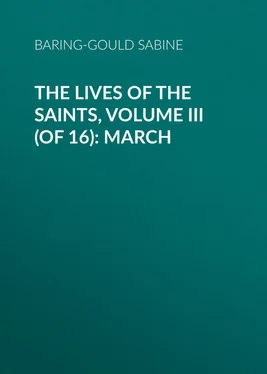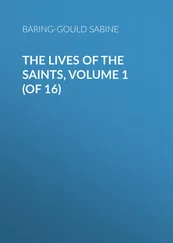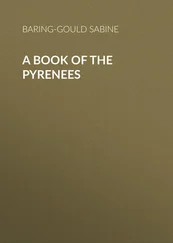Sabine Baring-Gould - The Lives of the Saints, Volume III (of 16) - March
Здесь есть возможность читать онлайн «Sabine Baring-Gould - The Lives of the Saints, Volume III (of 16) - March» — ознакомительный отрывок электронной книги совершенно бесплатно, а после прочтения отрывка купить полную версию. В некоторых случаях можно слушать аудио, скачать через торрент в формате fb2 и присутствует краткое содержание. Жанр: foreign_antique, foreign_prose, на английском языке. Описание произведения, (предисловие) а так же отзывы посетителей доступны на портале библиотеки ЛибКат.
- Название:The Lives of the Saints, Volume III (of 16): March
- Автор:
- Жанр:
- Год:неизвестен
- ISBN:нет данных
- Рейтинг книги:3 / 5. Голосов: 1
-
Избранное:Добавить в избранное
- Отзывы:
-
Ваша оценка:
- 60
- 1
- 2
- 3
- 4
- 5
The Lives of the Saints, Volume III (of 16): March: краткое содержание, описание и аннотация
Предлагаем к чтению аннотацию, описание, краткое содержание или предисловие (зависит от того, что написал сам автор книги «The Lives of the Saints, Volume III (of 16): March»). Если вы не нашли необходимую информацию о книге — напишите в комментариях, мы постараемся отыскать её.
The Lives of the Saints, Volume III (of 16): March — читать онлайн ознакомительный отрывок
Ниже представлен текст книги, разбитый по страницам. Система сохранения места последней прочитанной страницы, позволяет с удобством читать онлайн бесплатно книгу «The Lives of the Saints, Volume III (of 16): March», без необходимости каждый раз заново искать на чём Вы остановились. Поставьте закладку, и сможете в любой момент перейти на страницу, на которой закончили чтение.
Интервал:
Закладка:
Other accounts state that Kieran's meeting with S. Patrick somewhere out of Ireland occurred several years after the latter had commenced his apostolical labours in this country. Jocelin places it at a time when S. Patrick was returning from Britain, whither he had gone to obtain a supply of additional helpers for his mission, and tells us that Kieran was then one of the six Irish priests who were proceeding to foreign countries for religious improvement, and all of whom afterwards became bishops in their own country. In the Tripartite history of S. Patrick the precise place of meeting is not given; but, what is more to the purpose, it is represented as having occurred at least twelve years after S. Patrick had begun his mission in Ireland, and Kieran is stated to have then received directions from the saint concerning the district in which he should erect his monastery.
It appears, however, that he was no disciple of S. Patrick at all, and did not live in his times. His name does not occur in Tirechan's list, nor in any of the Lives of S. Patrick, except in those two just quoted, and his appearance in them is evidently due to the legends in circulation concerning the meeting. Had S. Kieran been a disciple of the apostle, how could he have become a scholar of S. Finnian of Clonard, in the 6th century? For such he is stated to have been, not only in the Life of S. Finnian, and in that of his illustrious namesake of Clonmacnois, but also in the tract which is called his first life, and which enters into more particulars than the other. S. Finnian's school could not have become celebrated before 534. In both Kieran's lives his namesake of Clonmacnois, who died in 549, and the two Brendans, one of whom died in 577, and the other a few years earlier, are spoken of as having had transactions with him.
We may then safely conclude that he belonged to the sixth century, became distinguished towards the middle of it, and died during its latter half. As this was known to be the case, his blundering biographers strove to reconcile their nonsense concerning the antiquity and privileges of Saigir, with the true date of his death, by making him die at the age of about 300 years, although, had they calculated better, about 220 years might have sufficed.
Kieran, we may safely conclude, was made a bishop about the year 538. Having retired to a lonesome spot, since called Saigir, he led at first the life of a hermit, and after some time erected a monastery, around which a city gradually grew up. Next he established a nunnery in the neighbourhood for his mother Liadania, and some pious virgins, her companions, whence the church Killiadhuin got its name. Besides the care of his monastery, Kieran was assiduously employed in preaching the Gospel in Ossory, and he converted a great number of heathen. He is usually considered to have been the first bishop of Ossory, and founder of that see. It is singular that, notwithstanding all that is said in the lives, in praise of Kieran, he is not much spoken of in the accounts of contemporary saints, and that none of the Irish annals or hagiologies give the date of his death. Hence Colgan was inclined to think that he died in Cornwall, and is to be identified with S. Piran, of Peranzabulo. But the first life hints that he died at Saigir. Although the year of his death is unknown, there can be little doubt of his having been alive after the year 550.
If S. Piran of Peranzabulo be the same as S. Kieran of Saigir, his bones have been discovered of late years, when the ancient oratory of Peranzabulo, near Padstowe, in Cornwall, was dug out of the sand. In favour of this identification, Colgan points out that S. Piran was commemorated at Padstow on the 5th March, the same day as S. Kieran in Ireland; and John of Tynemouth asserts that S. Kieran did retire from Ireland into Cornwall where he spent the latter part of his life, and died. The Cornish, moreover, change the K. of Irish names into P.
Some of the legends related of S. Kieran deserve to be recorded. He is said when a little boy to have been bitterly distressed at seeing a hawk carry off a little bird in its talons. Then he cried to God, and the hawk dropped its prey.
One day a king or chief in the neighbourhood carried off one of the nuns of the convent governed by his mother. Kieran pursued him full of wrath, and coming to the castle, bade the chief restore the poor maiden to her cell. "Not unless the cuckoo should rouse me to-morrow morning," answered the chief. Now it was mid-winter. But that night no snow fell round the house where lodged the abbot, and at early dawn a bird perched on the roof under the window of the chief, and began to call "Cuckoo, cuckoo, cuckoo!" Then the ravisher, in alarm, started from his bed, and restored the nun to her convent.
On an autumn day, Kieran noticed a magnificent bank of blackberries, so large and ripe, that he thought it a sad pity the winter should come and destroy them. Therefore he cast a cloak over the bramble. Now it fell out that the next ensuing April, Ethnea Vacha the wife of king Ængus was ill, and felt a craving for blackberries. She was then, with her husband, the guest of Concraidh, king of Ossory. Concraidh told S. Kieran of the strange wish of the lady, and instantly the saint remembered the hedge of blackberries covered by his cloak, and he went and plucked as many as he could carry, and brought them to the sick queen, and she ate them and revived.
One day S. Kieran of Clonmacnois and the two Brendans visited the monastery. The steward came to the abbot in dismay, and said, "There is nothing to offer these distinguished guests except some scraps of bacon, and water."
"Then serve up the bacon and the water," said the saint. And when they were brought on the table, the bacon tasted to every man better than anything he had ever tasted before, and as for the water, the benediction of the man of God had converted it into wine. But there was at the table a lay-brother, and when he had some bacon put before him, he thrust his platter away angrily, for he was tired of bacon, and had expected something better, when distinguished visitors were present. "Hah!" said the abbot, – 'not by way of condemnation, but of prophecy,' – "The time will come when you, son of Comgall, shall eat ass's flesh in Lent, and soon after you will lose your head."
It is also related that there was a boy came to Saigir called Crichidh of Clonmacnois, and remained for a while under the abbot Kieran. Now it was the custom and rule of S. Kieran, that the blessed Paschal fire should burn all the year. But out of mischief, as we moderns should say, "instigante diabolo," as the mediæval chronicler expresses it, the boy put the fire out. Then S. Kieran said to the brethren, "Look! our fire is extinguished by that confounded boy (a maledicto puero), Crichidh, purposely, for he is always up to mischief (sicut solet semper nocere). And now we shall be without fire till next Easter, unless the Lord sends us some. As for that boy, he will come to a bad end shortly." And so it was, for on the morrow a wolf killed the boy.
Now S. Kieran of Clonmacnois, to whom the boy belonged, hearing of this, came to Saigir, and was courteously received by S. Kieran the Elder. But there was no fire, and the snow fell in large flakes; and it was bitterly cold, so that S. Kieran of Clonmacnois and his companions sat blue with frost, and their teeth chattering. Then S. Kieran of Saigir raised his hands to heaven, and prayed, and there fell a globe of fire into his hands, and he spread the lap of his chasuble (casula), and went with the fireball in it before his guests, and they warmed themselves thereat. And after that, dinner was served. Then said S. Kieran of Clonmacnois, "I will not eat till my boy is restored to me." "Brother," answered S. Kieran of Saigir, "I knew wherefore thou didst come; the boy is now on his way hither." And presently the door opened, and the boy that the wolf had eaten, walked in alive and well.
Читать дальшеИнтервал:
Закладка:
Похожие книги на «The Lives of the Saints, Volume III (of 16): March»
Представляем Вашему вниманию похожие книги на «The Lives of the Saints, Volume III (of 16): March» списком для выбора. Мы отобрали схожую по названию и смыслу литературу в надежде предоставить читателям больше вариантов отыскать новые, интересные, ещё непрочитанные произведения.
Обсуждение, отзывы о книге «The Lives of the Saints, Volume III (of 16): March» и просто собственные мнения читателей. Оставьте ваши комментарии, напишите, что Вы думаете о произведении, его смысле или главных героях. Укажите что конкретно понравилось, а что нет, и почему Вы так считаете.












